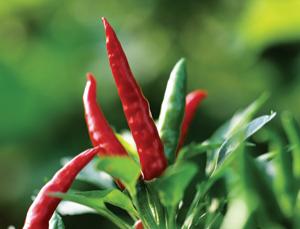Plants may be able to ’hear’ others
Source: newscientist.com
 They can "smell" chemicals and respond to light, but can plants hear sounds? It seems chilli seeds can sense neighbouring plants even if those neighbours are sealed in a box, suggesting plants have a hitherto-unrecognized sense.
They can "smell" chemicals and respond to light, but can plants hear sounds? It seems chilli seeds can sense neighbouring plants even if those neighbours are sealed in a box, suggesting plants have a hitherto-unrecognized sense.Plants are known to have many of the senses we do: they can sense changes in light level, "smell" chemicals in the air and "taste" them in the soil. They even have a sense of touch that detects buffeting from strong winds.
The most controversial claim is that plants can hear, an idea that dates back to the 19th century. Since then a few studies have suggested that plants respond to sound, prompting somewhat spurious suggestions that talking to plants can help them grow.
A team led by Monica Gagliano at the University of Western Australia in Crawley placed the seeds of chilli peppers (Capsicum annuum) into eight Petri dishes arranged in a circle around a potted sweet fennel plant (Foeniculum vulgare).
Sweet fennel releases chemicals into the air and soil that slow other plants’ growth. In some set-ups the fennel was enclosed in a box, blocking its chemicals from reaching the seeds. Other experiments had the box, but no fennel plant inside. In each case, the entire set-up was sealed in a soundproof box to prevent outside signals from interfering.
As expected, chilli seeds exposed to the fennel germinated more slowly than when there was no fennel. The surprise came when the fennel was present but sealed away: those seeds sprouted fastest of all.
Gagliano repeated the experiment with 2400 chilli seeds in 15 boxes and consistently got the same result, suggesting the seeds were responding to a signal of some sort. She believes this signal makes the chilli seeds anticipate the arrival of chemicals that slow their growth. In preparation, they undergo a growth spurt. The box surrounding the fennel would have blocked chemical signals, and Gagliano suggests sound may be involved.
[...]
Read the full article at: newscientist.com
Image: Imagenavi/Getty Images
Plant communication: Sagebrush engage in self-recognition and warn of danger






















